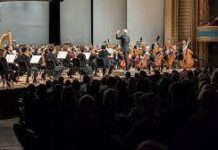In 1965 Martin Luther King arrived in Chicago, looking to expand his civil rights campaign beyond the American South. He found a deeply divided city, not governed by the Jim Crow laws which separated southern states, but equally segregated by socio-economic disparity and divisive housing plans. Much of Chicago’s black population lived in slums on the south and west sides. King left in 1966 after agreeing an improved housing plan with the mayor. But by March 1967 he himself admitted that much of his work had already been undone.
Less than 50 years later, Chicago’s deeply disenfranchised black communities gave birth to drill, a rap sound that has since spread to London, New York, Paris, Amsterdam, Lisbon, Stockholm, Sydney, Dublin, Seoul and Kumasi. Named after a slang term for attacks between gangs, drill is ominous hip-hop with lyrics – like trap and gangster rap before it – about drug dealing and street crime. What distinguishes drill from other forms of hip-hop is its combative energy and its particular concern with gang conflict and murder. Whereas trap, the Atlanta-born rap style that dominated hip-hop for most of the 2000s, is often rhythmically rigid – with a snare falling on the third beat of each bar – drill moves to skippy, syncopated hi-hat patterns echoing the rapid fire of a machine gun.













